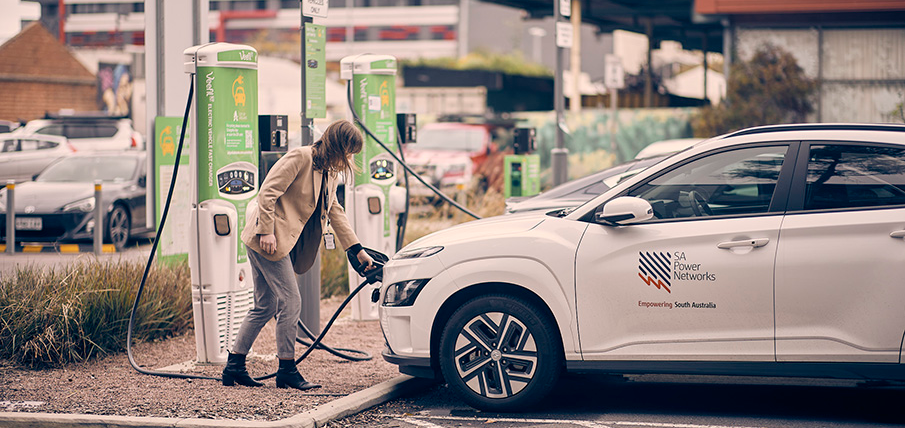SA Power Networks responds to National Electric Vehicle Strategy (NEVS) Consultation Paper

The Australian Government has recently sought views on proposed goals, objectives, and actions for the National Electric Vehicle Strategy.
The purpose of seeking feedback was to help shape a truly National strategy to ensure Australians can access the best transport technologies and help meet emission reduction targets. The strategy will aim to provide social, economic, business, health and environmental benefits.
In October, SA Power Networks made a submission to the Australian Government on its associated consultation paper. The submission commends the government for recognising the significance of Australia’s electric vehicle (EV) opportunity and the need for a national strategy, to extract as much benefit as possible from the transition.
The submission also outlines how South Australia is at the forefront of a consumer-led energy transition, particularly in terms of rooftop solar uptake, with around 35% of SA homes generating renewable electricity. This is delivering a variety of positive social, environmental, and economic outcomes, but is not without its challenges for the electricity network. Aside from a broad decarbonisation benefit, the electrification of transport will be a key tool for using the abundant renewable energy generated in South Australian homes during the day.
By 2050, EVs will increase how much energy is delivered through the South Australian distribution network by about 50% and this network will be the primary distribution system for transport fuel for the State. Of course, the use of abundant, renewable energy and the resultant shift away from petrol/diesel from the consumer energy mix, will deliver significant cost of living benefits through lowering household energy bills.
If the transition can be managed well, South Australia can decarbonise the transport sector within existing network capacity and expect to see significant reductions in average network price (per kWh) between 2030 and 2050. However, if it’s poorly managed, major investment in the grid will be needed - eroding potential customer benefits.
Detail is given in the submission of other measures by government and industry that could increase affordability and accessibility of EVs. With SA Power Networks’ focus being on how the electricity grid can be used to encourage cheaper and more accessible charging. Measures detailed were:
- Smart Charging
Smart-charging is central to the efficient integration of EVs into the grid and maximising consumer benefits.
- Cost Reflective Pricing
Cost-reflective pricing (time of use tariffs) is one of the best methods to reward customers for shifting their charging.
- Smart Meters
A slow smart meter roll-out is a key barrier because most cost-reflective tariffs require them.
On accelerating EV uptake, the general position is that implementation of national fuel-efficiency standards is the foundational supply-side policy to accelerate EV uptake. SA Power Networks has urged the Government to consult broadly on the design, implementation and enforcement of a suitable standard.
SA Power Networks was thankful for the opportunity to make a submission to the consultation paper and looks forward to participating in the initiatives which flow and playing a critical role in delivering the range of benefits to energy consumers.
Got questions?
Contact us by:
- email at newenergyservices@sapowernetworks.com.au,
- or by phone on 13 12 61 (press option 2).